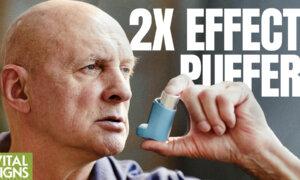Exercising in the evening between 6 p.m. and midnight lowers the risk of death, cardiovascular disease, and microvascular disease, Australian researchers have revealed.
Scientists from the University of Sydney and the University of Wollongong in New South Wales examined 29,836 adults with obesity and a mean age of 62.2. Individuals with type 2 diabetes were also examined.
The researchers used wearable device data to monitor physical activity in the morning, afternoon, and evening in participants.
Timing of physical activity may play a role in the future of obesity and type two diabetes management, researchers lamented.
Exercise Physiology lecturer Angelo Sabag, the first author of the paper, highlighted exercising at particular times may help mitigate the health risks of obesity.
“Due to a number of complex societal factors, around two in three Australians have excess weight or obesity which puts them at a much greater risk of major cardiovascular conditions such as heart attacks and stroke, and premature death.”
Matthew Ahmadi, a joint first author on the study, noted researchers tracked continuous activity in stints of three minutes, based on prior research showing a link between such activity and lower cardiovascular disease risk.
“We didn’t discriminate on the kind of activity we tracked, it could be anything from power walking to climbing the stairs, but could also include structured exercise such as running, occupational labour or even vigorously cleaning the house,” he said.
The researchers used data from the UK Biobank of nearly 30,000 adults aged more than 40. Of these, 2995 also had type two diabetes.
Participants measured aerobic activity using a wrist accelerometer that was worn for 24 hours a day for seven days.
Then, the team linked health data to look at the individual health trajectory over 7.9 years. During this time, 1,425 deaths, 3,980 cardiovascular incidents, and 2,162 microvascular dysfunction events were recorded.
How Many Australians Are Obese?
Among adults, 31 percent are living with obesity, according to the Australian Institute of Health and Wellbeing.In addition, two in three adults, or 67 percent, are either overweight or obese, the government data last updated in 2023 shows.
Based on the data, one in four, or 25 percent of children are overweight or living with obesity. However, only 8.2 percent of adults are living with obesity.
“The rates of overweight and obesity are similar for boys and girls across age groups,” the data shows.
Body Mass Index estimates were taken from the 2017 to 2018 National Health Survey, since the 2020-2021 survey did not take physical measurements due to the COVID-19 pandemic.







